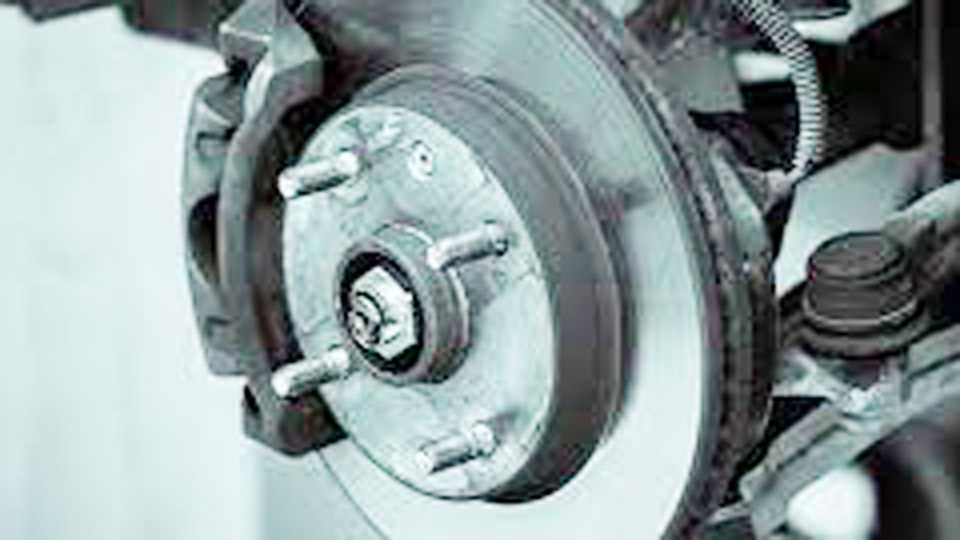How Do Hydraulic Brakes in a Motor Car Work?
I’ve always been fascinated by how cars work, especially the parts that keep us safe. One day, while pressing the brake pedal in my old sedan, I wondered, “How does this simple push stop a heavy car so quickly?” That curiosity led me to dive deep into hydraulic brakes, the system behind every smooth stop I make.
If you’ve ever wanted to know how hydraulic brakes in a motor car work, you’re in the right place. I’ve spent time under the hood, talking to mechanics, and breaking down this system to understand it inside out. I’ll explain it all in simple terms, like I’m chatting with you over coffee. From the brake pedal to the wheels, let’s explore how hydraulic brakes keep you safe on the road.

Image by lubex
What Are Hydraulic Brakes?
| # | Preview | Product | |
|---|---|---|---|
| 1 |
 |
LEED BRAKES Hydraulic Kit – Manual Brakes 64.5-66 Mustang | Check Price on Amazon |
When I first heard the term “hydraulic brakes,” it sounded complicated. But it’s actually a clever system that uses liquid to stop your car. Hydraulic brakes are the most common braking system in modern cars. They rely on a special fluid to transfer force from your foot to the wheels.
The idea is simple: when I press the brake pedal, that force moves through a system of tubes filled with brake fluid. This fluid pushes on parts at the wheels, which squeeze the car’s rotors or drums to slow it down. It’s like a chain reaction, all happening in a split second. I love how such a basic concept—pushing fluid—can control a 4,000-pound vehicle.
Hydraulic brakes are powerful and reliable. They’ve been around for decades, and I’ve seen them in everything from my compact hatchback to heavy-duty trucks. Now, let’s break down the key parts that make this system work.
Key Components of Hydraulic Brakes
To understand hydraulic brakes, I first had to learn about the parts involved. Each one plays a role in turning my pedal press into a stop. Here’s what I found out about the main components.
Brake Pedal
The brake pedal is where it all starts. When I push it, I’m sending a signal to the braking system. It’s connected to a lever that multiplies the force of my foot. This makes it easier to stop the car without me having to push too hard.
Master Cylinder
The master cylinder is like the heart of the system. It’s a small device under the hood filled with brake fluid. When I press the pedal, it pushes a piston in the master cylinder. This piston forces the fluid out into tubes called brake lines. I was amazed at how this small part controls so much power.
Brake Lines
Brake lines are metal or rubber tubes that carry the fluid from the master cylinder to the wheels. I’ve seen them snaking through my car’s undercarriage. They’re built to handle high pressure, so the fluid moves quickly and doesn’t leak.
Brake Calipers (Disc Brakes)
In my car, which has disc brakes, the brake calipers are key. They sit at each wheel and hold the brake pads. When fluid reaches the caliper, it pushes pistons that squeeze the pads against a metal disc called the rotor. This friction slows the wheel.
Brake Drums (Drum Brakes)
Some cars, like my old pickup, use drum brakes on the rear wheels. Instead of calipers and rotors, they have brake shoes inside a metal drum. When fluid reaches the wheel cylinder, it pushes the shoes against the drum to create friction. I’ve noticed drum brakes are simpler but less common in new cars.
Brake Fluid
Brake fluid is the magic liquid that makes it all work. It’s stored in a reservoir near the master cylinder. I check it regularly to make sure it’s at the right level. The fluid is special because it doesn’t compress, so it transfers force perfectly. It also resists boiling under high heat from braking.
Brake Pads and Shoes
Brake pads (for disc brakes) and brake shoes (for drum brakes) are the parts that actually touch the rotor or drum. They’re made of tough materials like ceramic or metal to handle the friction. I’ve replaced pads myself and seen how worn they get over time.
Here’s a table to sum up the components and their jobs:
| Component | What It Does | Where It’s Found |
|---|---|---|
| Brake Pedal | Sends force to the master cylinder | Inside the car, under the driver’s foot |
| Master Cylinder | Pushes brake fluid into the lines | Under the hood |
| Brake Lines | Carry fluid to the wheels | Throughout the car |
| Brake Calipers | Squeeze pads against rotors (disc brakes) | At each wheel (disc brakes) |
| Brake Drums | House shoes that press against drums | At each wheel (drum brakes) |
| Brake Fluid | Transfers force from pedal to wheels | In the reservoir and lines |
| Brake Pads/Shoes | Create friction to slow the wheels | Inside calipers or drums |
How Hydraulic Brakes Work Step by Step
Now that I know the parts, let’s walk through what happens when I press the brake pedal. It’s like a relay race, with each part passing the action to the next. Here’s how I picture it.
First, I push the brake pedal. This moves a lever that presses on the piston in the master cylinder. The piston squeezes the brake fluid, which is sitting in the reservoir.
The fluid, under pressure, flows through the brake lines. These lines are sealed tight, so no fluid escapes. The pressure travels fast, reaching all four wheels almost instantly.
At the wheels, the fluid pushes on pistons in the brake calipers (for disc brakes) or wheel cylinders (for drum brakes). In my car’s disc brakes, the caliper pistons squeeze the brake pads against the rotor. The friction between the pads and rotor slows the wheel.
If I have drum brakes, like on my old truck, the fluid pushes the brake shoes outward against the drum. The friction here does the same job—slowing the wheel.
As the wheels slow, the car comes to a stop. When I release the pedal, the pistons relax, and the pads or shoes pull back slightly. The fluid flows back toward the master cylinder, ready for the next stop.
It’s incredible how fast this happens. I barely notice the process, but it’s working hard every time I brake. The key is the fluid—it’s what makes the system so responsive.
Why Hydraulic Brakes Are So Effective
I’ve driven cars with different braking systems, and hydraulic brakes stand out for a few reasons. Here’s why I think they’re so good.
Power and Precision
Hydraulic brakes multiply the force from my foot. A gentle press can stop a heavy car because the system uses leverage and fluid pressure. I love how I can control the stop, whether it’s a soft slowdown or a quick halt.
Even Braking
The fluid distributes pressure equally to all wheels. This means my car stops smoothly without pulling to one side. I’ve noticed this especially in wet or slippery conditions.
Reliability
Brake fluid doesn’t compress, so the system is consistent. I’ve never had a hydraulic brake fail when maintained properly. The sealed system also keeps dirt and water out, which helps it last.
Easy Maintenance
I’ve learned that hydraulic brakes are straightforward to maintain. Checking the fluid level, replacing pads, or bleeding the system to remove air bubbles are all things I can do with basic tools. It’s not as scary as it sounds.
Common Types of Hydraulic Brake Systems
Not all hydraulic brakes are the same. I’ve seen two main types in cars, and each has its quirks. Here’s what I’ve learned about them.
Disc Brakes
Most modern cars, like my sedan, use disc brakes on all four wheels or at least the front. They’re great because the rotors are exposed to air, which keeps them cool. I’ve noticed disc brakes handle hard braking better, like when I’m stopping fast in traffic. They’re also easier to inspect and replace.
Drum Brakes
Drum brakes are older but still used on the rear wheels of some cars, like my pickup. They’re cheaper to make and good for lighter braking. But I’ve found they can overheat during heavy use, like towing. They’re also trickier to work on because the parts are hidden inside the drum.
Some cars mix both—discs in the front, drums in the back. I’ve driven these, and they work fine for everyday use. But if I had to choose, I’d go with all-disc brakes for better performance.
Maintaining Hydraulic Brakes for Safety
I’ve learned that hydraulic brakes need regular care to work properly. Neglecting them can lead to weak braking or even failure. Here’s how I keep mine in top shape.
Check Brake Fluid
I check the brake fluid level every few months. It’s in a clear reservoir under the hood, marked with “min” and “max” lines. If it’s low, I top it off with the type recommended in my car’s manual. Low fluid can mean a leak, so I watch for puddles under the car.
Replace Brake Pads
Brake pads wear out over time. I check them every 6 months or when I hear squeaking. If they’re less than a quarter-inch thick, I replace them. I’ve done this myself a few times, but a mechanic can do it quickly if you’re not comfortable.
Inspect Rotors and Drums
I look at my rotors for grooves or warping. If they’re damaged, I have them resurfaced or replaced. For drum brakes, I check the shoes and drum for wear. Keeping these parts smooth ensures good braking.
Bleed the Brakes
Air bubbles in the brake lines make the pedal feel spongy. I bleed the brakes every couple of years to remove air. It’s a two-person job—one pumps the pedal while the other opens a bleeder valve at the wheel. If I’m unsure, I let a mechanic handle it.
Watch for Warning Signs
I pay attention to how my brakes feel. A soft pedal, grinding noises, or the car pulling to one side means something’s wrong. I get it checked right away to avoid bigger problems.
How Anti-Lock Brakes (ABS) Work with Hydraulic Systems
Many cars, including mine, have anti-lock brakes (ABS). I was curious how this fits with hydraulic brakes, so I looked into it. ABS is an add-on that makes hydraulic brakes even safer.
When I slam on the brakes, ABS prevents the wheels from locking up. It uses sensors to detect if a wheel is about to skid. If it is, a computer quickly pumps the brakes at that wheel, letting it rotate again. This helps me steer during hard stops, especially on slippery roads.
The hydraulic system still does the heavy lifting—moving fluid to the brakes. ABS just controls how that pressure is applied. I’ve felt the pedal pulse under my foot when ABS kicks in, and it’s reassuring to know I can still steer.
Common Problems with Hydraulic Brakes
Even the best systems have issues sometimes. I’ve dealt with a few brake problems and learned what to watch for. Here are the common ones.
Low Brake Fluid
A low fluid level can make braking weak. I once had a slow leak in a brake line, and the pedal felt soft. I topped off the fluid and had the leak fixed. Always check for leaks if the fluid keeps dropping.
Worn Pads or Shoes
Worn pads or shoes reduce stopping power and can damage rotors or drums. I replace them before they get too thin to avoid costly repairs.
Air in the Lines
Air bubbles make the pedal spongy. Bleeding the brakes fixes this. I had this happen after a brake job, and bleeding restored the firm pedal feel.
Stuck Caliper
A caliper piston can seize, causing uneven braking or dragging. I noticed my car pulling to one side, and a mechanic freed up the caliper. Regular lubrication helps prevent this.
Warped Rotors
Hard braking can overheat rotors, making them warp. I felt a vibration in the pedal when this happened. Resurfacing or replacing the rotors fixed it.
Why I Trust Hydraulic Brakes
After years of driving, I’ve come to appreciate hydraulic brakes for their simplicity and power. They’re not perfect—maintenance is key—but they’ve never let me down when I’ve taken care of them. I love knowing that a push of my foot can stop my car safely, whether I’m cruising in town or dodging a deer on a back road.
The system’s design is genius. Using fluid to transfer force means I don’t need superhuman strength to brake. And with modern features like ABS, hydraulic brakes are even smarter. I’ve seen how they work in all kinds of cars, from my daily driver to my friend’s SUV, and they’re always reliable.
Conclusion: The Power Behind Your Brakes
Learning how hydraulic brakes work has given me a new respect for my car. Every time I press the pedal, a chain of parts—pedal, master cylinder, fluid, calipers—works together to stop me safely. It’s a simple idea, but it’s executed with precision. Whether you’re a gearhead or just someone who wants to understand their car better, knowing how hydraulic brakes function is empowering.
Next time you brake at a stoplight, think about the fluid rushing through the lines and the pads gripping the rotors. It’s a small miracle happening under your car. Keep your brakes maintained, and they’ll keep you safe for years. Thanks for joining me on this journey under the hood—now go enjoy the drive!
FAQs
What is brake fluid, and why is it important?
Brake fluid is a special liquid that transfers force from the pedal to the brakes. It’s important because it doesn’t compress, so it delivers power instantly. Without it, hydraulic brakes wouldn’t work.
How often should I check my brake fluid?
I check my brake fluid every few months or during oil changes. Look at the reservoir under the hood. If it’s below the “min” line, top it off or check for leaks.
What’s the difference between disc and drum brakes?
Disc brakes use pads and rotors for better cooling and performance. Drum brakes use shoes and drums, which are cheaper but can overheat. Most cars use discs in front, sometimes drums in back.
Why does my brake pedal feel spongy?
A spongy pedal usually means air in the brake lines or low fluid. Bleeding the brakes or fixing a leak should solve it. If it persists, have a mechanic check it.
Can hydraulic brakes fail completely?
It’s rare if maintained, but leaks, worn parts, or air in the system can weaken brakes. I always fix issues early to avoid failure. Regular checks keep them reliable.

David Peterson, the chief editor of sparepartscare. I am an automobile engineer and assign to an local firm with much experience in automobile equipment. During the time, most of my experience is related to the Industry of cars parts. I learned about the thing, when working with experienced inspectors, one must be as good as the inspector, or better, with knowledge of the project as well as the practical aspects of automobile industry.






